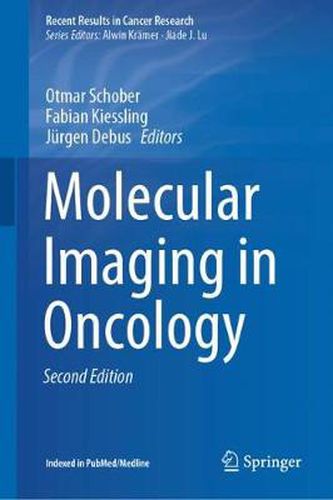Readings Newsletter
Become a Readings Member to make your shopping experience even easier.
Sign in or sign up for free!
You’re not far away from qualifying for FREE standard shipping within Australia
You’ve qualified for FREE standard shipping within Australia
The cart is loading…






This book discusses the most significant recent advances in oncological molecular imaging, covering the full spectrum from basic and preclinical research to clinical practice. The content is divided into five sections, the first of which is devoted to standardized and emerging technologies and probe designs for different modalities, such as PET, SPECT, optical and optoacoustic imaging, ultrasound, CT, and MRI. The second section focuses on multiscale preclinical applications ranging from advanced microscopy and mass spectroscopy to whole-body imaging. In the third section, various clinical applications are presented, including image-guided surgery and the radiomic analysis of multiple imaging features. The final two sections are dedicated to the emerging, crucial role that molecular imaging can play in the planning and monitoring of external and internal radiotherapy, and to future challenges and prospects in multimodality imaging. Given its scope, the handbook will benefit all readers who are interested in the revolution in diagnostic and therapeutic oncology that is now being brought about by molecular imaging.
$9.00 standard shipping within Australia
FREE standard shipping within Australia for orders over $100.00
Express & International shipping calculated at checkout
This book discusses the most significant recent advances in oncological molecular imaging, covering the full spectrum from basic and preclinical research to clinical practice. The content is divided into five sections, the first of which is devoted to standardized and emerging technologies and probe designs for different modalities, such as PET, SPECT, optical and optoacoustic imaging, ultrasound, CT, and MRI. The second section focuses on multiscale preclinical applications ranging from advanced microscopy and mass spectroscopy to whole-body imaging. In the third section, various clinical applications are presented, including image-guided surgery and the radiomic analysis of multiple imaging features. The final two sections are dedicated to the emerging, crucial role that molecular imaging can play in the planning and monitoring of external and internal radiotherapy, and to future challenges and prospects in multimodality imaging. Given its scope, the handbook will benefit all readers who are interested in the revolution in diagnostic and therapeutic oncology that is now being brought about by molecular imaging.